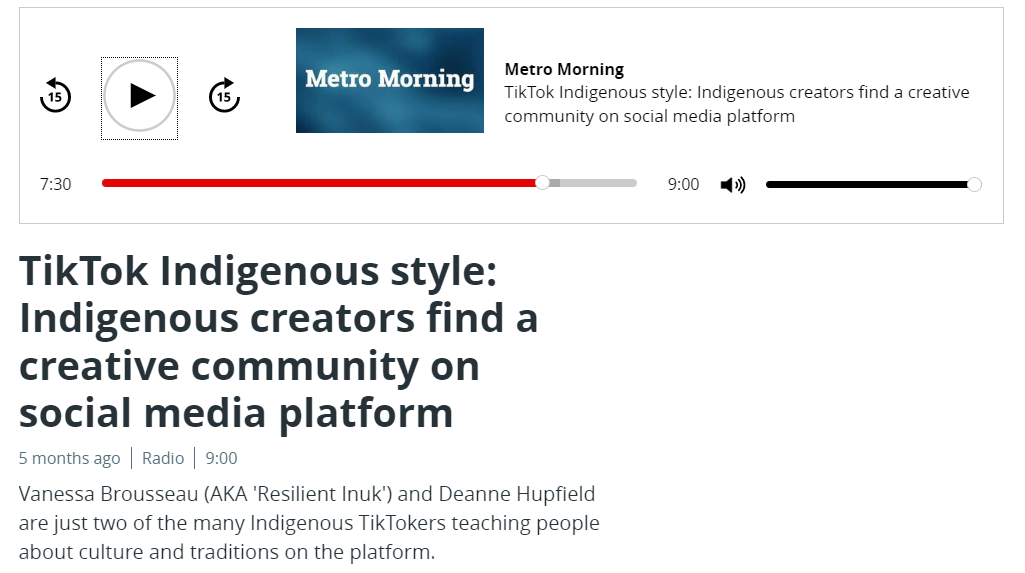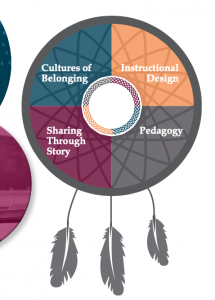
Here is a short, 9 minute interview with Vanessa and Deanne. They talk about how they are able to use TikTok to connect with members of their community to amplify their voices and bring awareness to important causes. Their personal stories are inspiring and impactful. This is a great representation of how Indigenous people are using these platforms to share their narrative, unadulterated.
As discussed by Vass Bednar and Jesse Hirsch (2022) in their opinion piece, TikTok is proving to be more effective in amplifying Indigenous voices than Canadian Broadcasting Corporation (CBC). They identify some of the key features of TikTok that allow for its success to do this:
- Different algorithmic priorities
- Greater opportunities for creators to find success
- Data collection practices through the use of short, densely packed videos that loop
- Responsive algorithmically curated content
- Creators get rapid and responsive feedback
- Easy to connect with audiences
- Creators access to analytics
- The ability to be a part of groups and subcultures
- Model of abundance, lots of creators, lots of content, minimal restrictions
Indigenous content creators have had large success on the platform due to the popularity of their content and an unbiased algorithm that minimizes barriers to promoting their content. This largely contrasts to the barriers and control exerted by broadcasting companies such as CBC.
Another interesting finding I came across during my research of social media as a lever of Indigenous identity, is the TikTok accelerator program aimed at uplifting Indigenous voices and stories.

To learn more about this program and how it supports Canadian Indigenous content creators, click here.



